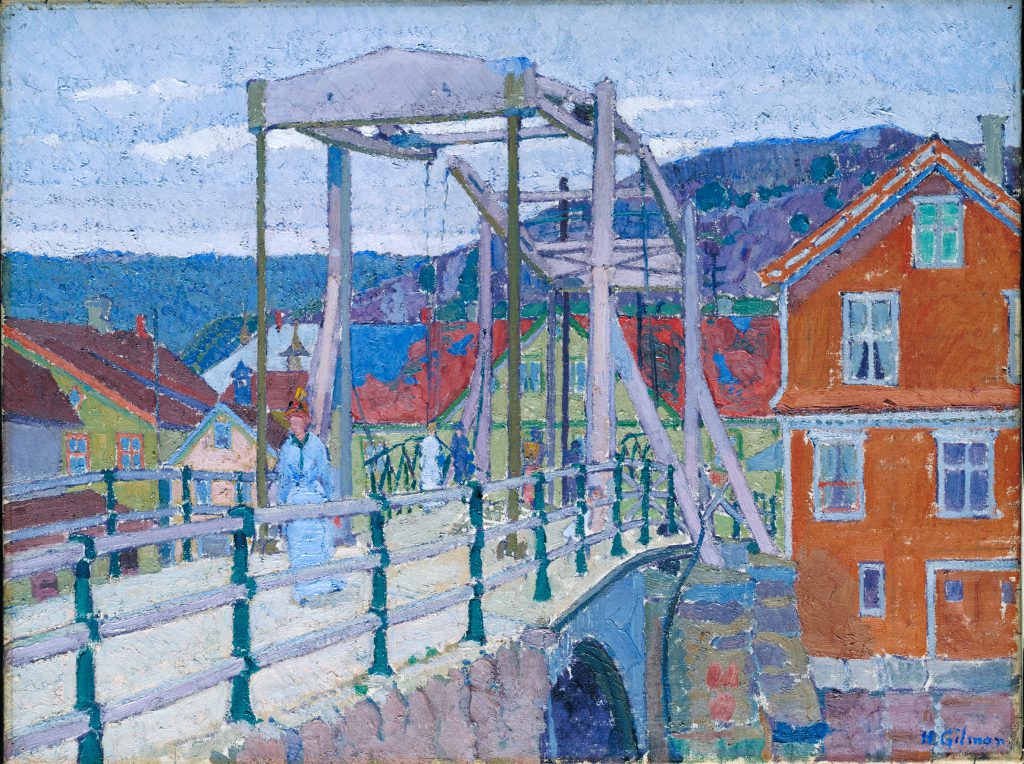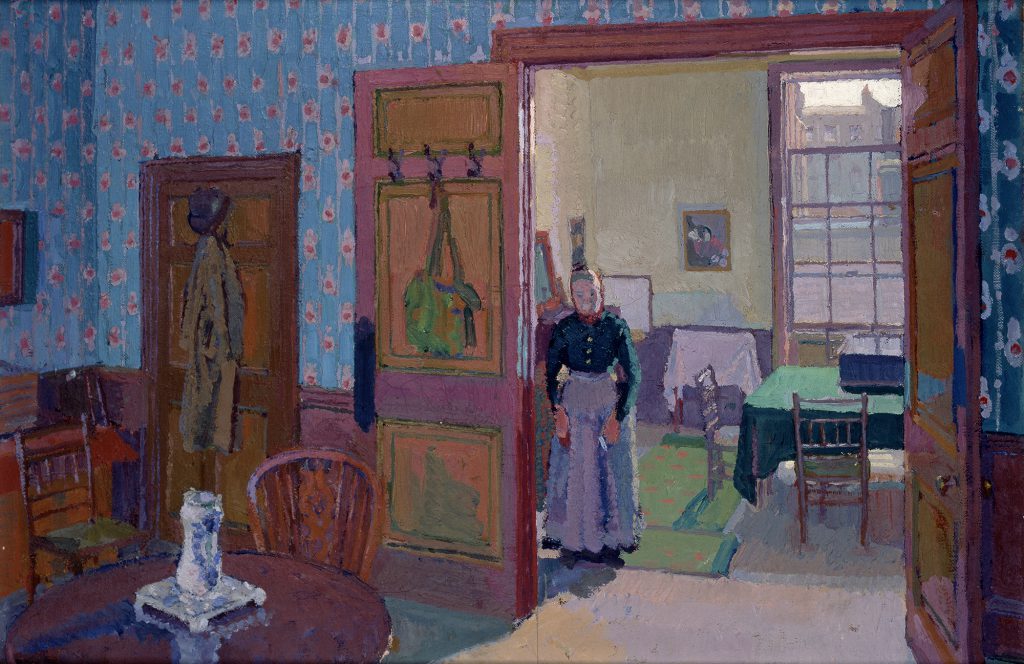
The Harold Gilman exhibition currently on show at Pallant House Gallery is visually stunning.
Harold Gilman (1876–1919) has been described as an English Post-Impressionist. His portrayal of life in the early 20th century combines the gritty formality of the Camden Group of artists with the vitality of post impressionism.
Harold Gilman was a founder member of both the Camden Group and the Fitzroy Street Group. He enrolled at the Hastings School of Art in 1896 and in 1897 moved to the Slade School of Fine Art in London where he received a traditional training.
Gilman was influenced by the artists Walter Sickert and later Spencer Gore and Lucien Pissarro, all of whom had connections with and worked in Sussex. Gilman’s paint became more textural, a little more broken and opaque in texture. By 1912 he was being grouped with the Post Impressionists.
In 1912 and 1913 Gilman visited Sweden and Norway where he experimented with vivid colours often employing a patchwork of flat, simplified areas of paint as can be seen in his depiction of the Canal Bridge at Flekkefjord painted in 1913. Gilman’s work was never slavish to the current vogue – he took only what was necessary to his own needs. Even during his periods of experimentation Gilman would often work in a traditional way from drawings squared-up for transfer with colour notes. It was this practice which allowed him to present a complex subject like the scene at Flekkefjord in a painterly and coherent way with beautifully articulated compositions.

Amongst the most famous of Harold Gilman’s pictures are those he painted in his lodgings at 47 Maple Street, Camden Town, London between 1914 and 1917. There is often an underlying discipline to the depiction of these interior scenes which lends them an internal dissonance contradicting the richness of his tone and palette. He revels in the mix of patterns, colours and objects – symbols of his middle-class upbringing. They are at once joyful and forlorn.
His paintings of women, whether nude or clothed, of whatever age or class, reveal a rare tenderness which is apparent in Interior with Mrs Mounter. Mrs Mounter was his housekeeper. Her apron, headscarf, the cloth covering the washstand in the background and her pose create a scene which seems ill at ease with itself. Gilman expresses the physical and social separation between Britain’s classes in the early 20th century as society changed. This was especially poignant for women and the issues of suffrage.
In 1919 at the age of just 43 Gilman fell victim to the flu epidemic and died. This exceptional exhibition gives a wonderful insight into the heights that this extraordinary and very British artist reached in the last years of his life. You must treat yourselves and go.
Harold Gilman – Beyond Camden runs until the 9th June 2019. The exhibition can be seen at Pallant House Gallery, Chichester. For more information go to www.pallant.org.uk.
By Rupert Toovey, a senior director of Toovey’s, the leading fine art auction house in West Sussex, based on the A24 at Washington. Originally published in the West Sussex Gazette.